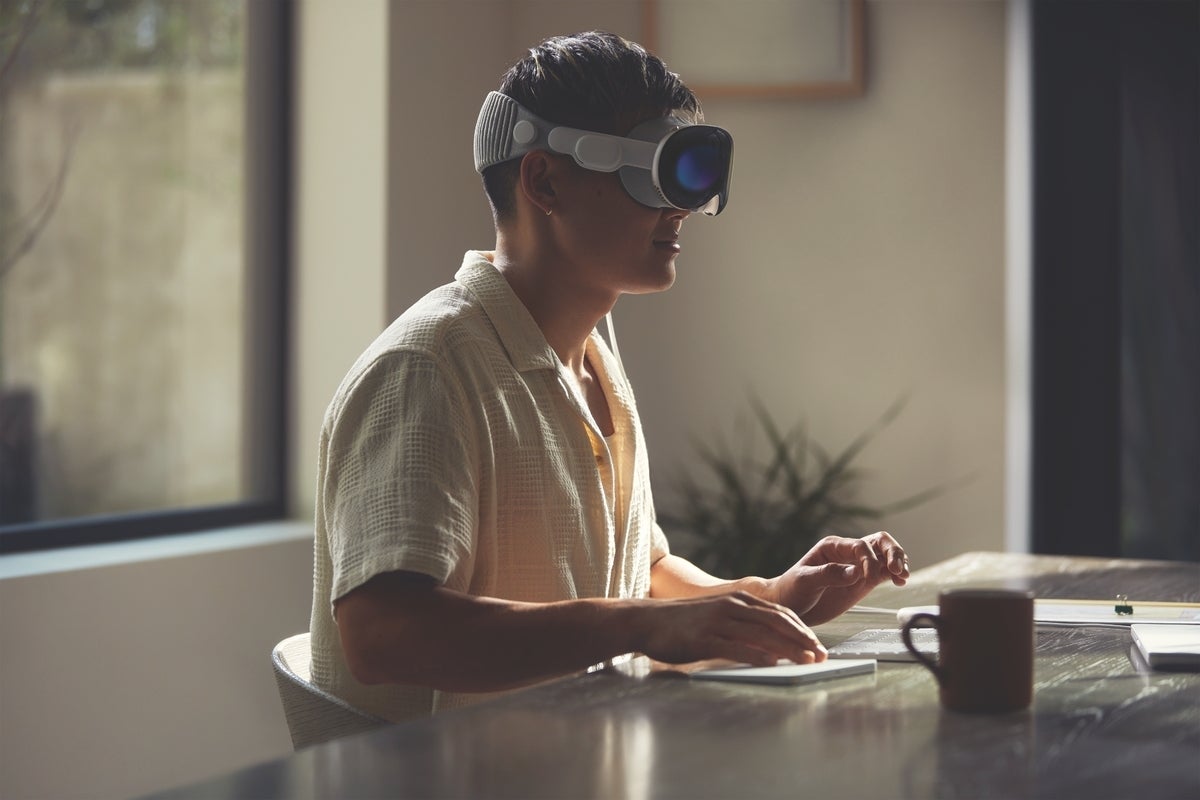“I haven’t upgraded the Mac (or PC) I use for work in a years. I was going to replace it this year, and I’m wondering if I could or should get an Apple Vision Pro instead. What do you think?”
I’ve heard more variations of that question in the past two weeks than I expected. It’s not a bad idea in some respects.
Apple itself is pitching Vision Pro as the first spatial computer platform.
The device uses an M2 processor on par with Macs from a year ago.
There are already tons of productivity apps and tools for the device (Office, Zoom, Webex, Things, Fantastical, and Photoshop immediately jump to mind).
Apple has made no secret of the fact it sees the device as a workplace tool.
The visionOS 1.1 beta has relatively broad support for mobile device management (MDM), meaning Vision Pro will be a good corporate citizen in short order (something that was unexpected; watchOS, for instance, took eight years to get even rudimentary MDM support).
It allows users to essentially have unlimited display space, unlike desktop or laptop displays.
I can see the wheels turning in people’s heads when they consider that this is a device with clear potential well beyond playing with dinosaurs, reliving moments with spatial photos or watching immersive movies or other content. It draws you into a slightly different but incredibly compelling world and it feels like someone’s handed you something from a magical future.
Sure, the starting price of $3499 is hard to justify. Still, there are all these tantalizing “but…” thoughts. Part of that thought process is “but I can use it to replace all my Macs or PCs or other devices.”
(I won’t lie, I’ve had these same thoughts. Had I not upgraded all my tech gear last year, I’d probably entertain them.)
But to those who’ve asked, my answer would be no. Let’s talk about why.
First-gen Apple devices usually fall short, even when revolutionary
The first reason to say no isn’t about what the Vision Pro can do. It’s that Apple has a pretty consistent track record of delivering first-generation devices that preview what’s possible but don’t fully deliver until one or two generations down the line. Users tend to forget that, because all of these devices have matured into fully formed solutions over time.
Let’s recap:
The original Mac had no hard drive, barely enough RAM, and no software ecosystem or compatibility; it would be years before the Mac began to deliver on all of its potential with the Mac II and Mac SE.
The less said about the Mac Portable, the better. But Apple’s second attempt at a portable Mac, the PowerBook 100 line hit the mark so well that we still use the same form factor for laptops even now.
Mac OS X 10.0 was practically a beta operating system when it was released (after a public beta); it wasn’t until Mac OS 10.2 (Jaguar) that the OS was really be viable for daily computing, and the Classic environment lasted for years.
The first iPod…
2024-02-24 01:00:04
Post from www.computerworld.com
